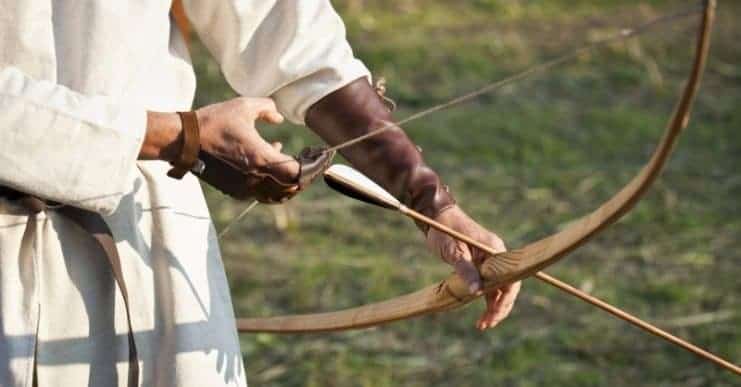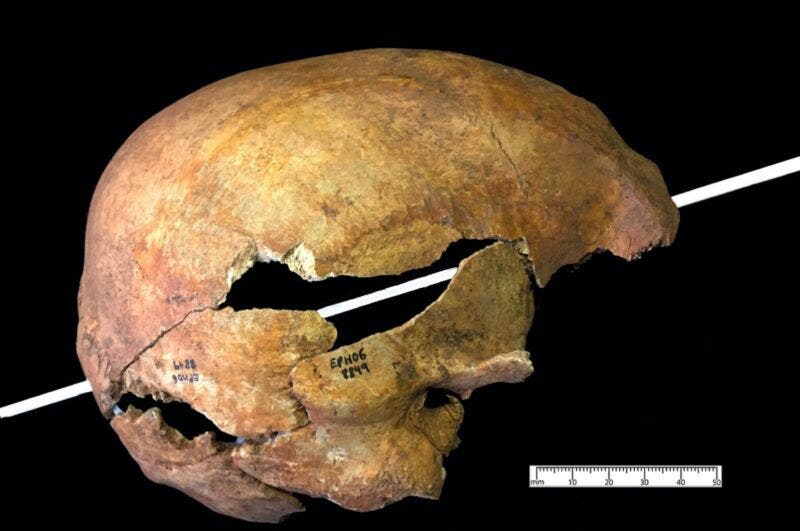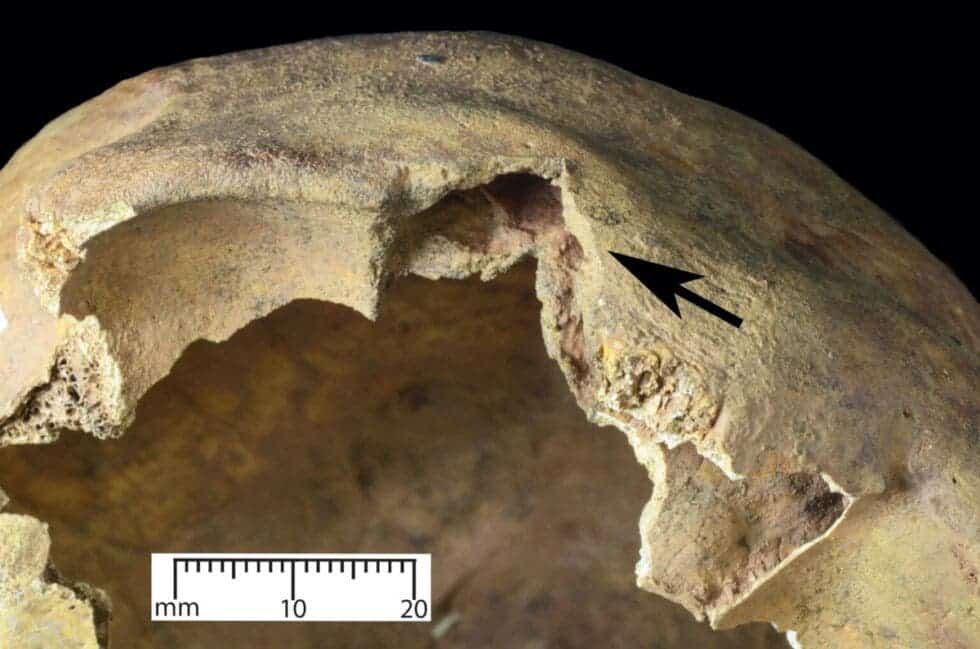
There are few medieval weapons that come close to the level of fame of the English longbow. As far as projectile-firing weapons go, the longbow was the state-of-the-art during its time. Heavy arrows shot from the longbow penetrate leather and cloth armor, and iron and steel plate armor.
However, the English longbow (almost double the draw weight of modern hunting bows) may have been even more devastating on the medieval battlefield than initially thought. According to a new study performed by archaeologists at the University of Exeter in the UK, longbow arrows could inflict trauma similar to the kind seen today in gunshot wounds.
There is also evidence that the arrows could spin clockwise, allowing them to penetrate through long bones.

For their study, the archaeologists examined 22 bone fragments and three teeth that were collected from a burial ground at a medieval Dominican friary in Exeter. The burial grounds were first established in 1232 and likely included the remains of high-status individuals from those times.
One of the bone fragments was a cranium with signs of obvious trauma above the right eye, with an exit wound at the back of the head. The authors conclude that the puncture wound was likely caused by an arrow that spun clockwise upon impact. The arrow in question was likely square or diamond-shaped, suggesting that the victim may have been a battle casualty or he was murdered by someone with access to military-grade weapons.

During medieval times, arrows were fletched so that they could spin mid-air, making them more stable and accurate in their trajectory. And, according to Ars Technica, this may be the first study showing that arrows were fletched deliberately so they could spin clockwise.
“Notably, gun manufacturers have historically rifled barrels so that bullets spin in the same—clockwise—direction,” the authors wrote in the Antiquaries Journal.
Additionally, the researchers found trauma near the top of a right tibia, suggesting that an arrow passed through tissue in the calf and became lodged in the bone. Another femur showed signs of trauma that suggest a glancing impact from an arrow.
“One scenario is that [the fatal wound to the skull] occurred first and that the wounds to the tibia and femur occurred subsequently, when the individual was dead or dying and face down,” the authors wrote. “Although this can only be a matter for speculation, this would probably account for the otherwise off angles of entry, which are hard to explain if the individual was standing up.” Alternatively, the individual could have been “mounted on a horse or standing in an elevated position, or on an elevated structure.”
These findings have important implications for our understanding of the medieval longbow that proved so decisive across history during famous battles such as the Battle of Crécy (1346) during the reign of King Edward III or the Battle of Poitiers (1356) led by Edward, Prince of Wales, also known as the Black Prince.



